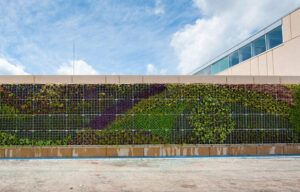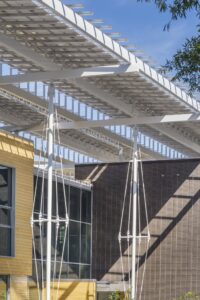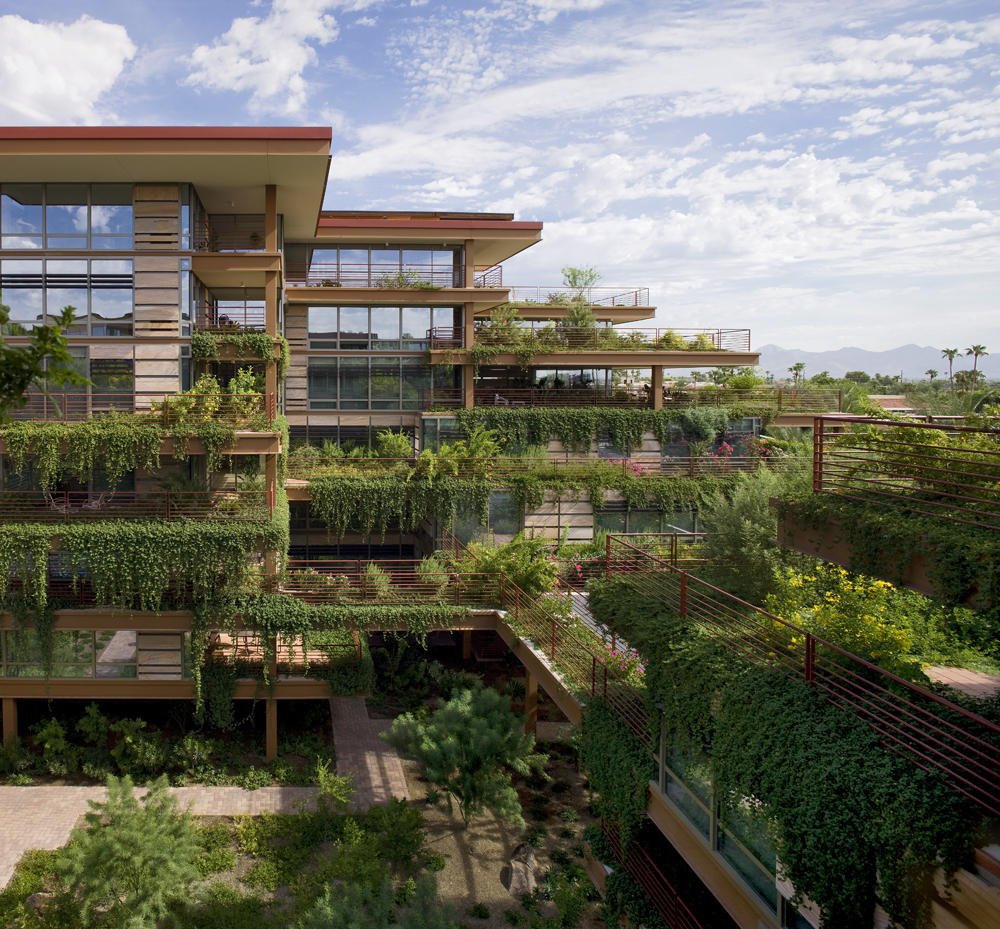At Optima, sustainable design has always been part of our ethos, as we strive to create vibrant communities built with the surrounding natural environment at the forefront. And as technology continues pushing the boundaries of sustainability in architecture, we wanted to explore what the future might possibly hold.
Historically, sustainable architecture has focused on lush outdoor environments, and at Optima, we know the benefits of urban greenspaces, which is why we have incorporated them into our communities for decades. Urban greenspaces and vertical landscaping are just some of the many sustainable features found in many of our Optima communities that help promote mental and physical health, while mitigating pollution and emulating the feeling of oasis.
Today, as new age modernism continues to evolve and environmentalism exceeds formalism, designers and architects are developing new ways to create built environments that also benefit the Earth. The newest approach to sustainable architecture is found within regenerative building.
Regenerative building looks beyond lessening harmful impact; it seeks ways to repair and restore the surrounding environment. In the regenerative design process, innovators conceive ways for each building to produce its own energy, treat its own water and emit a net-positive impact on the environment.

While global contests like Redesign the World are encouraging designers to envision radical solutions to end environmental issues through built communities, some architects have begun to bring regenerative building to life.

Buildings like The Kendeda Building For Innovative Sustainable Design found on Georgia Tech’s campus and Portal High School in Irvine, California use green roofs and water collection systems to reduce reliance on negative forms of energy. Other buildings like Nova Scotia Community College’s Centre for the Built Environment take advantage of multiple sustainable design features like living walls, geothermal systems and solar and wind energy to regenerate and restore their surroundings.
As sustainable approaches to design continue to expand over time, we can’t wait to continue exploring how – through architecture – we can change contribute to a healthier, more sustainable environment.

